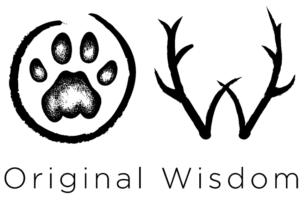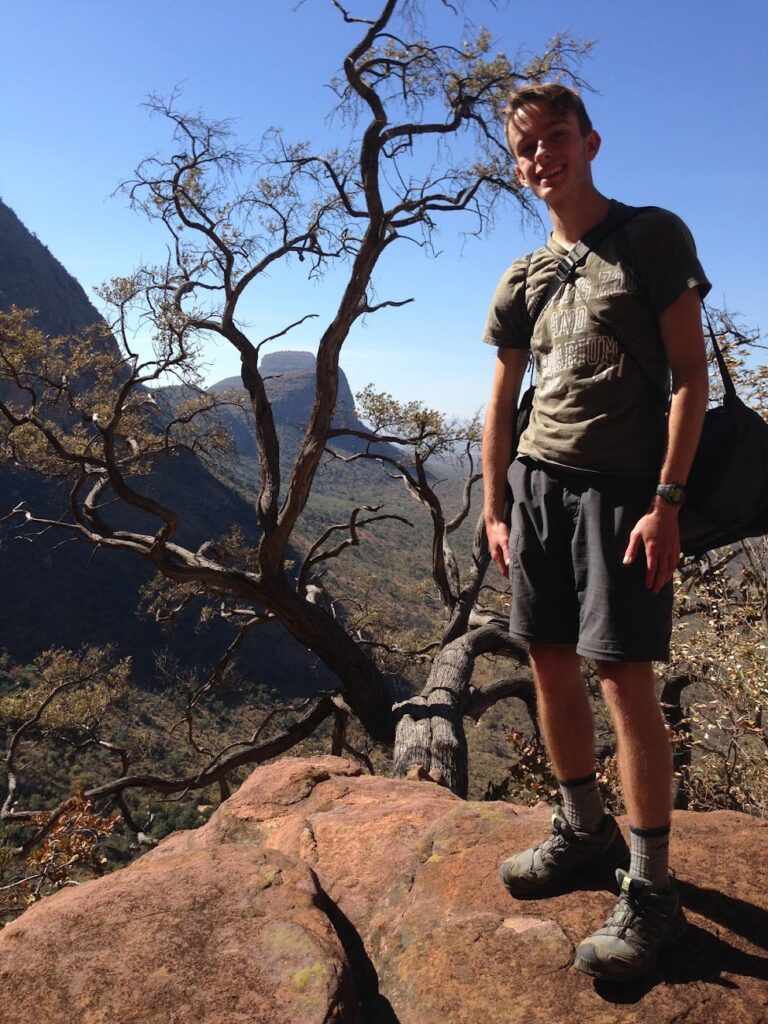Q and A for 29 Apr – 4 May 2020
Answer list: scrub hare skull from South Africa; rainbow-koppie skink scat from South Africa; black bear tracks from the USA; leopard tracks from South Africa; fallow deer bed and tracks from England; Geoffrey’s cat scat up in a tree from Chile
Amongst our global efforts to #flattenthecurve, we shared a few tracking photos on our Original Wisdom social media to help pass the time and keep our learning going. We posted a question a day, except for Tuesday because that’s Answer Day!
“The art and science of tracking develops creative and critical thinking skills, and curiosity and empathy, which also help us to better understand our place as caretakers of this beautiful world. The full expression of tracking includes more than just identifying tracks and signs. It also includes the interpretation of behaviours from tracks and signs, and the following and finding of animals (or people) using tracks and signs. Following and finding, or trailing, also builds confidence and leadership qualities in individuals, and teamwork among groups. Tracking requires us to really see the environment, and each other, and to reconnect to fundamental systems of living, which include knowledge of self, and connection to community (including non-human communities) and land. Tracking IS original wisdom. It’s both ancient, and new. Our ancestors tracked animals for food, clothing, shelter, and better quality of life. Today, we push the frontiers of tracking forward by including technology and new discoveries. One of the best things about tracking is that the “book of nature” is so vast that we can never know it all. It’s always exciting and always humbling.” – Kersey Lawrence
Wednesday, 29 April 2020
Our question today comes from South Africa. Who’s skull? Note how I’ve given you a ruler for scale, and multiple views of it – this is important for identifying skulls, “the devil is in the details”!
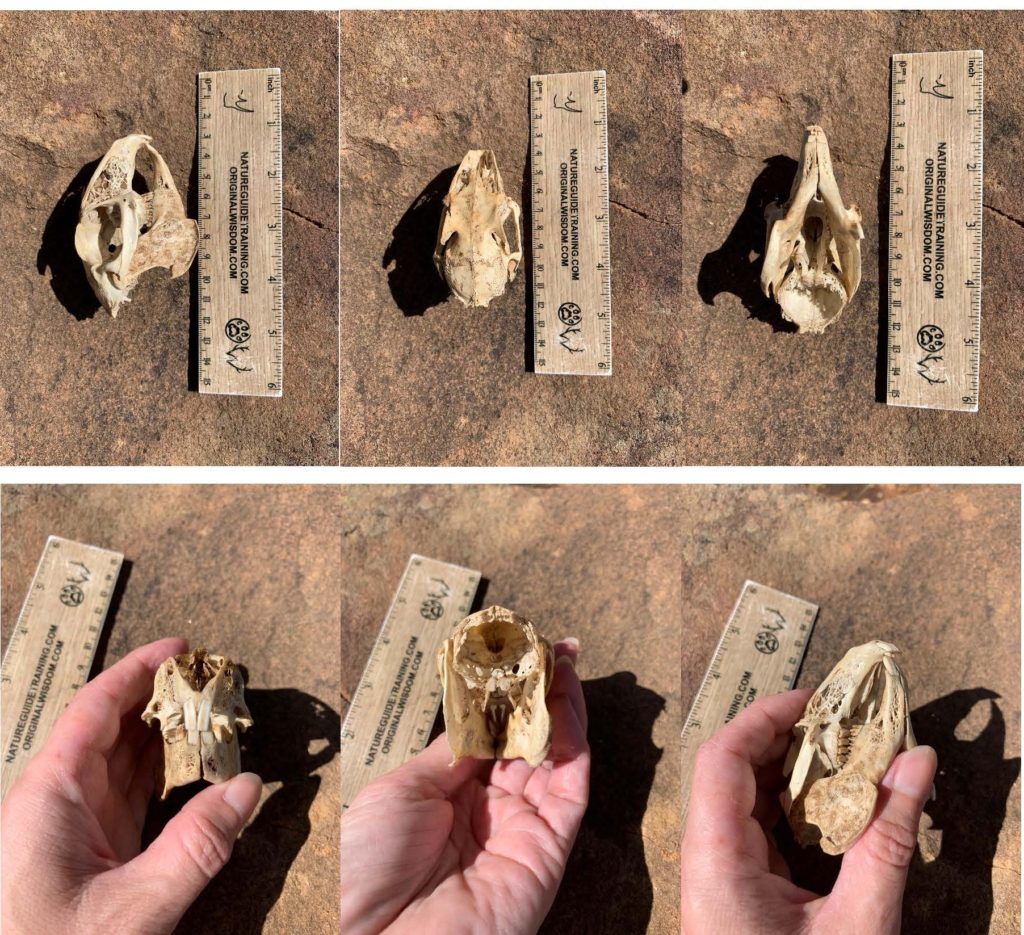
This is a scrub hare skull. Many got to lagomorph (any of an order (Lagomorpha) of gnawing herbivorous mammals having two pairs of incisors in the upper jaw one behind the other and comprising the rabbits, hares, and pikas. – definition by Merriam-Webster).
Justene Tedder (Canada) identified it as a scrub hare! She said, “lagomorph bc of the secondary peg upper incisors. I think don’t think there is a well-defined interparietal bone and the mesopterygoid space is wider than the length of the hard palate so rules out rock rabbits and riverine. Width of the incisors is robust so I’m going with scrub hare… had to use my books on this one!”
A few other interesting features noted by our participants were: that long diastema, and the interesting upper incisors (Lee Gutteridge, South Africa), size of skull and round back skull shape (Frikkie Kotze, South Africa), perforated rostrum and long flat diastema (Sarah Bee, USA), the “perforated” nasal cavity (Mark Apgar, USA), by shape and size as well as the large front teeth (tyronesoekoe, South Africa), four upper incisors and lacy bone structure of the nasal area says lagomorph – a distinguishing feature all lagomorphs is a set of peg like secondary upper incisors (graphicorganizer, USA). large empty space incisors and rest of teeth. Although not completely scientific but it has that fragile bone structure characteristic of lagomorph (Beau Harger, USA).
Many people noticed and commented on the “lacy” characteristic of the bone structure. Indeed.
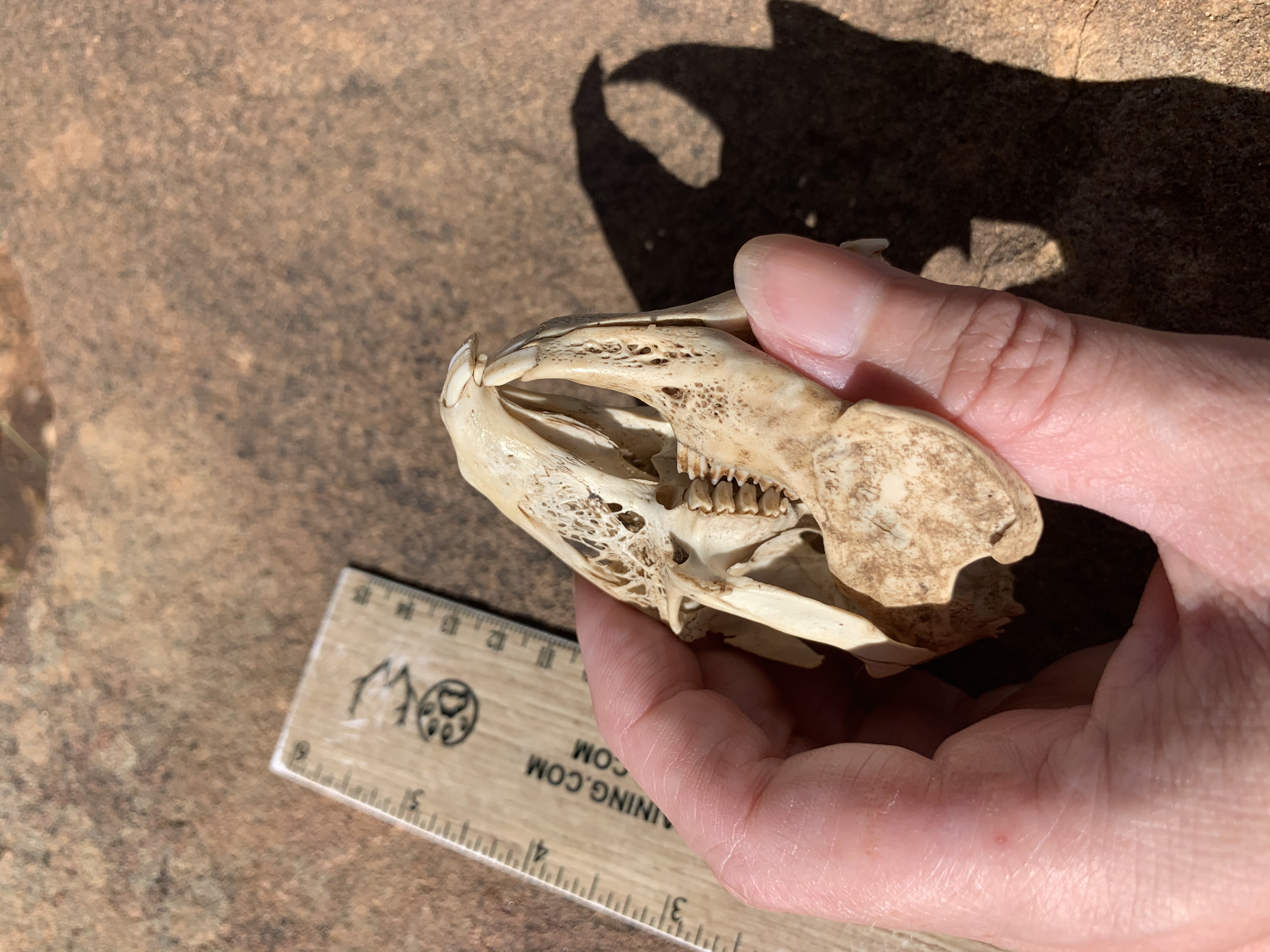
As mentioned by some of the participants, and by Merriam-Webster, another distinguishing feature of lagomorphs is the second set of tiny incisors just behind the first ones, on the upper jaw. You can see them clearly in the image above, where the skull is held upside down.
Thursday, 30 April 2020
Our question today comes from South Africa, but you can find these across the world. The question is, what type of creature made this?
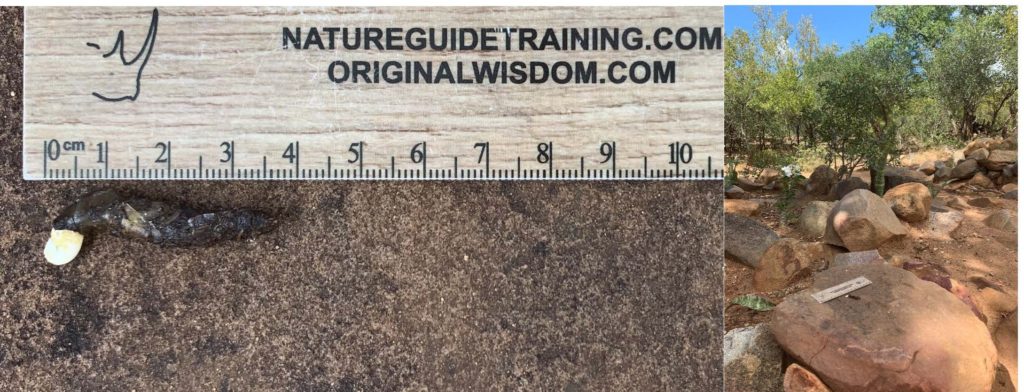
Petro Rossouw correctly identified this as the scat of a rainbow-koppie skink, also known as a five-lined skink, even though she said she didn’t think the size was right. This is a big specimen, they are typically smaller, and its large size caused many of our participants to guess a larger lizard. Their explanations were spot-on, though, with: Lizard species- the separate pellet of uric acid is a characteristic of lizard scat (Beau Harger, USA); for sure reptile because of the white uric acid cap (Justene Tedder, Canada); deffo lizard with the uric tip (Chuggy Charles, UK).
I was only looking for something like, lizard, skink, agama, or gecko, as an answer. If you look at the photo on the left you see a separate white “packet” of uric acid from the main contents of the scat. The white part contains nitrogenous waste and the black part is feces. The uric acid packet is less toxic than urea, and conserves water in the animal, which rarely drinks even when water is available. This two-part scat is classic for these critters. Sometimes the little packet breaks off and you find it laying next to the rest of the scat.
The only reason that I know for sure that this is a rainbow-koppie skink’s scat is because he lives in my house and goes out to sun himself when we open the front door in the mornings.
Friday, 1 April 2020
Our question today comes from Colorado, in the USA. What species made these tracks, and which foot is which? The ruler is in centimeters.
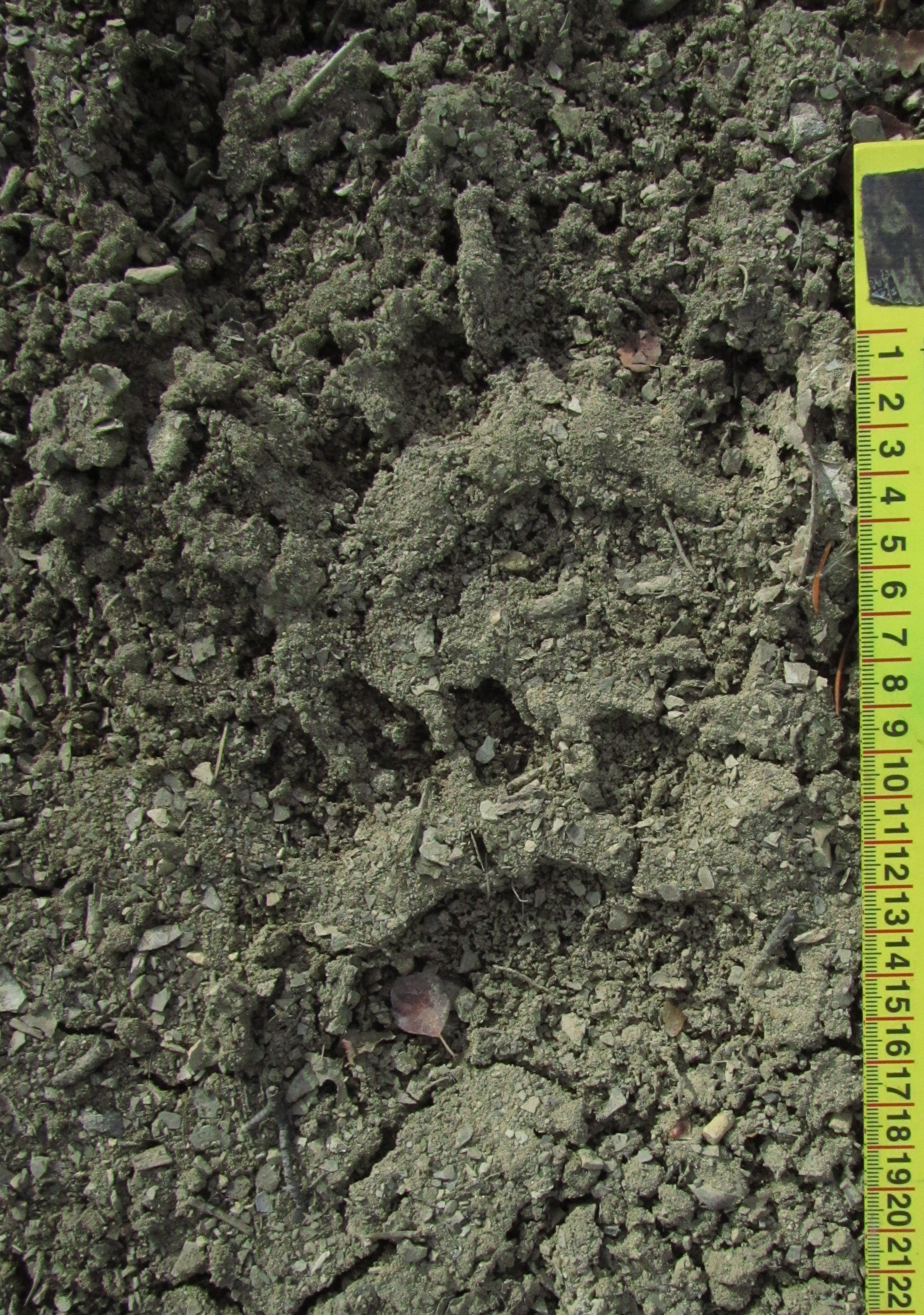
Many of our participants called these bear tracks (Beau Harger, USA; Justene Tedder, Canada; Kim Cabrera, USA; Amanda Jazmín Baez, USA; Kristi James, South Africa; Mike Watling, USA), which they are! In fact, these are the front and hind tracks of a black bear. Which foot is which mixed a few people up. Bear feet are funny. Where most animals have the widest part of the pads on the inside, they have it on the outside making these right foot tracks, not left. The outer edge of the track is closest to the ruler. The front track is at the top of the photo and the hind track has stepped partially on it. As Mike Watling identified, “on the bottom track toes 2-4 are in a line consistent with a hind. With the top track there is a distinctive arc which corresponds with the front paw.” Examine the drawings, below, from Mark Elbroch’s Mammal Tracks and Signs (2nd ed.). These are drawings of left tracks, front and hind.
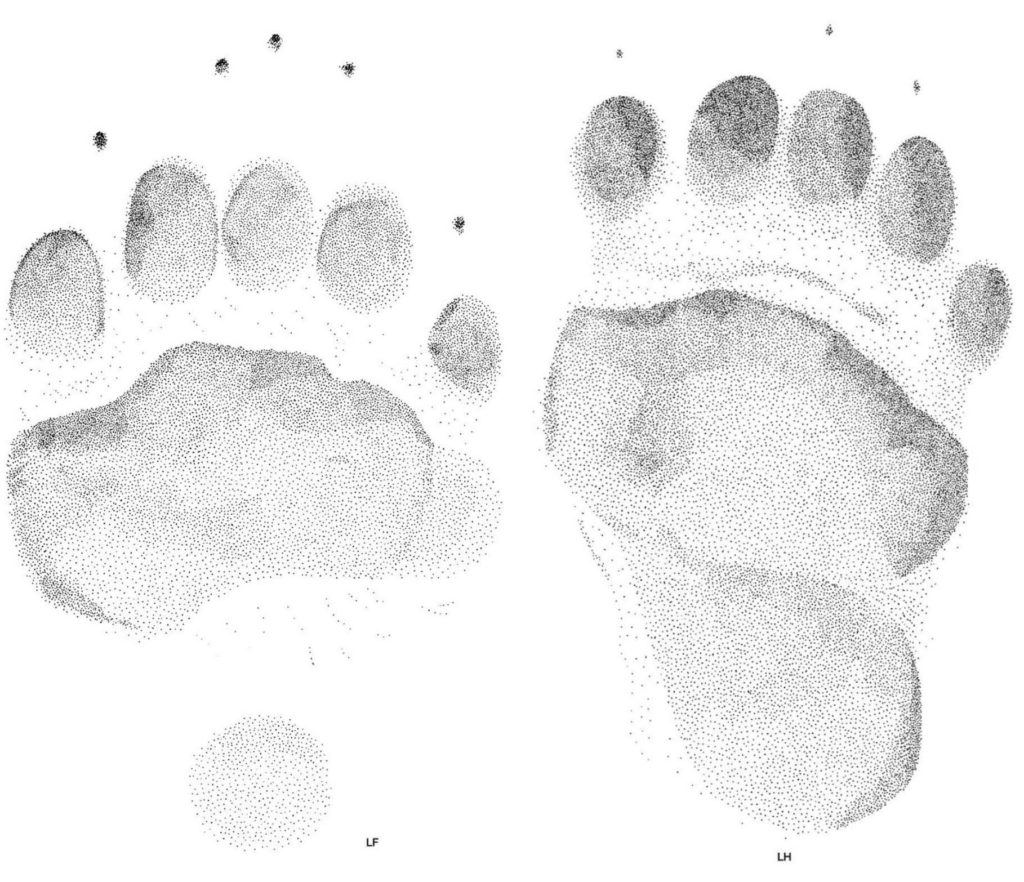
Saturday, 2 May 2020
Our question today comes from the dry riverbed behind our house in Canyon Game Reserve, outlying the Hoedspruit and Greater Kruger areas in South Africa. What species made these tracks?
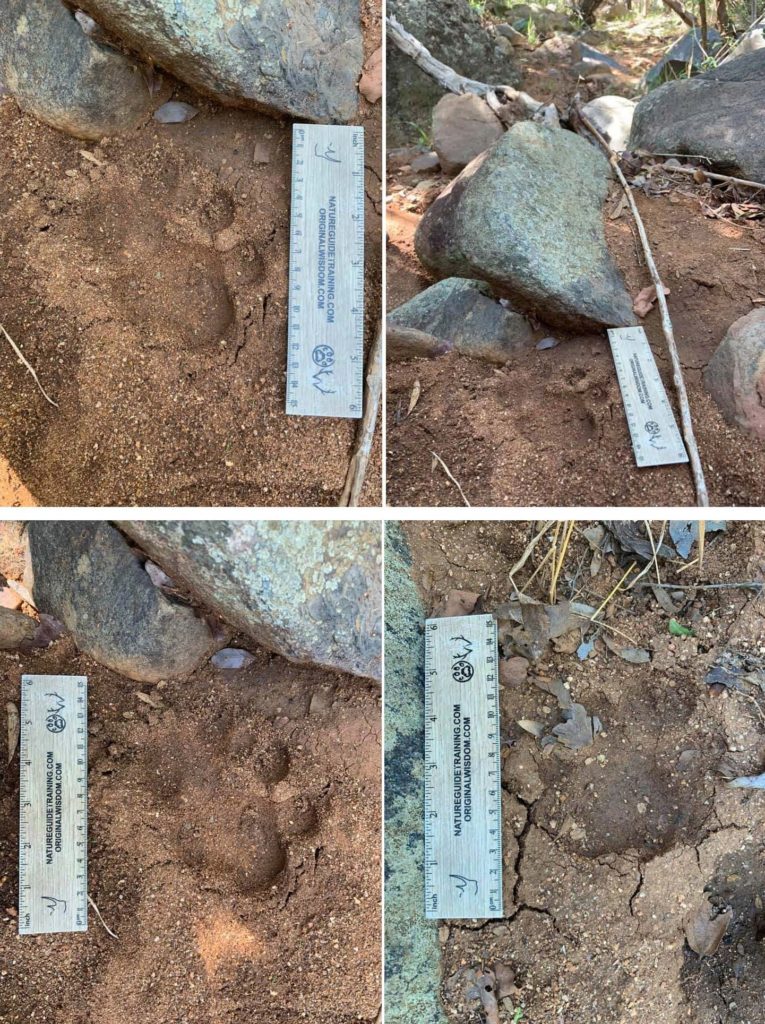
Bob Ollerton (USA) explained this perfectly: “The toes are teardrop shaped. The pad is hexagonal in shape with the posterior being wider than the anterior. The area of the pad is at least as large as the combined areas of four of the toes. The species with similar features in this approximate size range are adult cheetah, adult leopard, and juvenile lion. The track is obscured because it is a double register and I can’t see the leading toe. However, the left sides of the two toes on the right are concave to the left, and their right sides are convex to the right so this is a right track. The track is much too blocky for cheetah and is too small for lion, so this is a leopard track. The blockiness of the track and the fullness of the pad indicates that these are the right tracks of an adult (male) leopard.
Tristan Dicks (SA) added: “Male leopard. The out turned position of the track and size would indicate either leopard or lion due to their chest size but the soft substrate has made track appear slightly larger but not large enough to be male lion so that leaves lioness or male leopard. Due to the rounded toes and overall round shape of track as well as a small distance between the toes and top of the pad would seem to indicate a male leopard.”
These were exciting tracks to see behind our house, as it is the first evidence of leopard here. We know they must be here, but haven’t seen or heard anything to indicate that they are, before. I think the persecution of surrounding farmers, as well as the difficult terrain and larger home ranges of prey species and mates, might account for that. I wonder, do leopards in areas where they are persecuted call less than in areas where they aren’t? It sure seems so. But, then, how do they find each other? They must increase the frequency of scent marking behaviours…
I told Bob that I’d include a photo of cheetah tracks, as they are very different. They are a longer track, almost dog-like, with narrow lobes in the back of the meta-pads, and with protracted claws (they are always out).
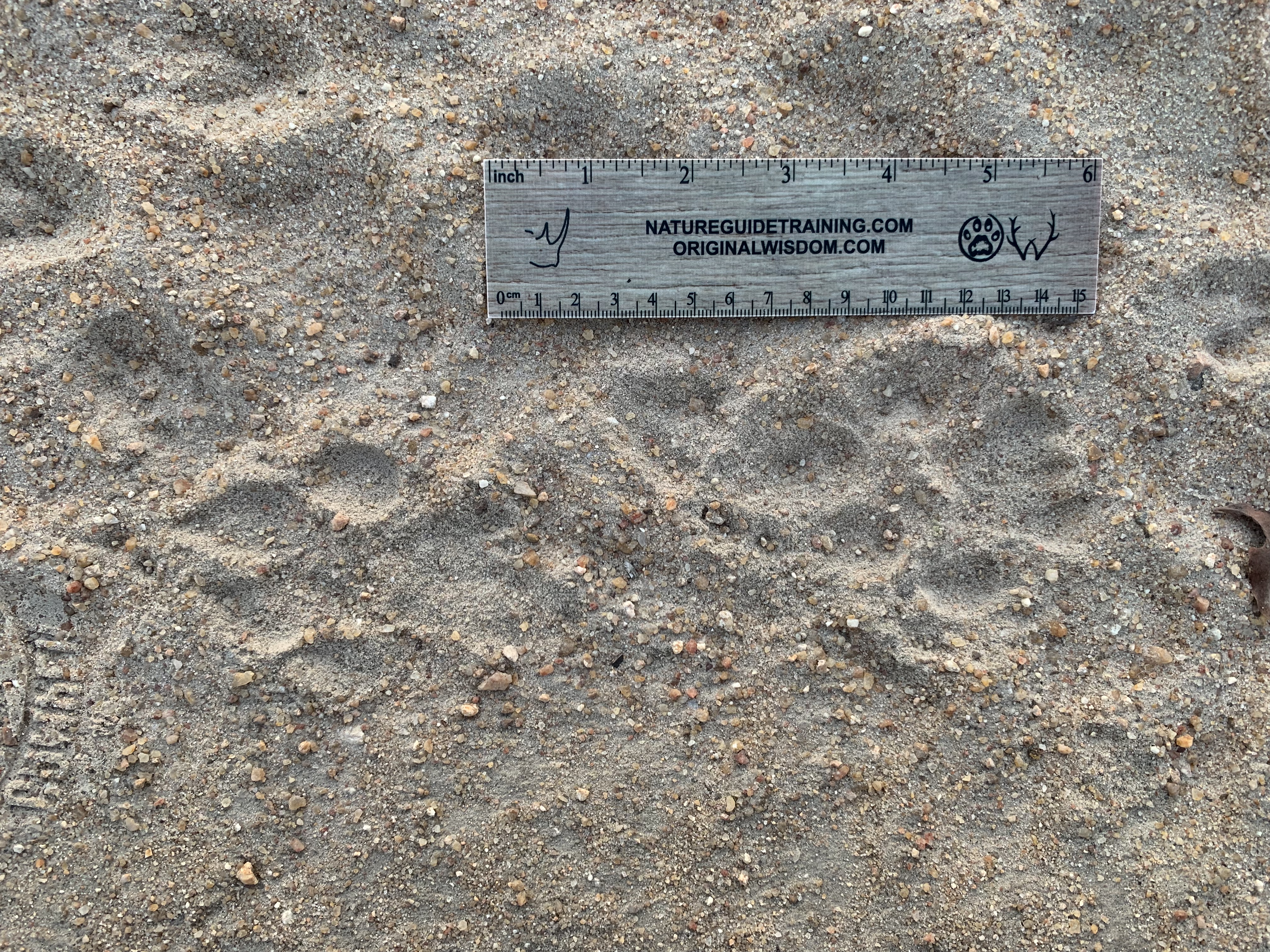
Below is a handy little chart I created for comparing cheetah tracks with leopard and lion. The drawings are from Lee Gutteridge’s and Louis Liebenberg’s Mammals of Southern Africa and their Tracks and Signs. Telling leopard and lion tracks apart isn’t always easy, and anyone who tells you otherwise is telling you a story. Young lion tracks overlap in size with some large male leopards. Often, trackers know what animals are in an area because they have become familiar with the territories occupied by different animals and get used to the way their social structures (and feet) look in their tracks. Social structure plays a big role in identification. In general, lions are in prides or coalitions. Leopards are solitary except when mating or with young. A quick search of an area generally reveals social structure. Then, male lion tracks are enormous, so if you find any of those you are almost gauranteed it’s lions. There are other, morphological and behavioural differences that show up in thier tracks and are helpful, but that’s for the advanced course!
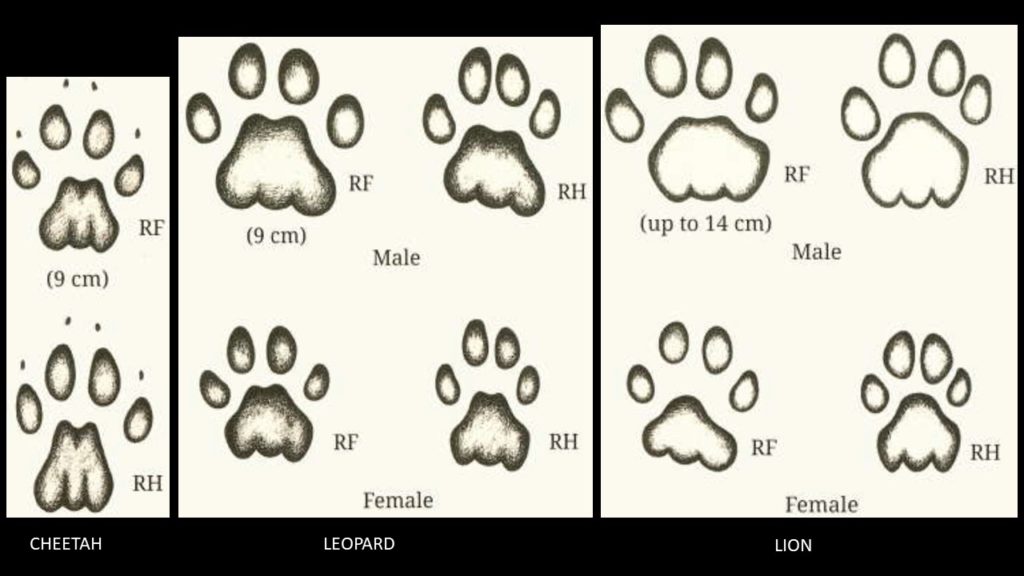
Sunday 3 May 2020
Our question today comes from a forested area of southern England. What is the first photo of and what species made these tracks?
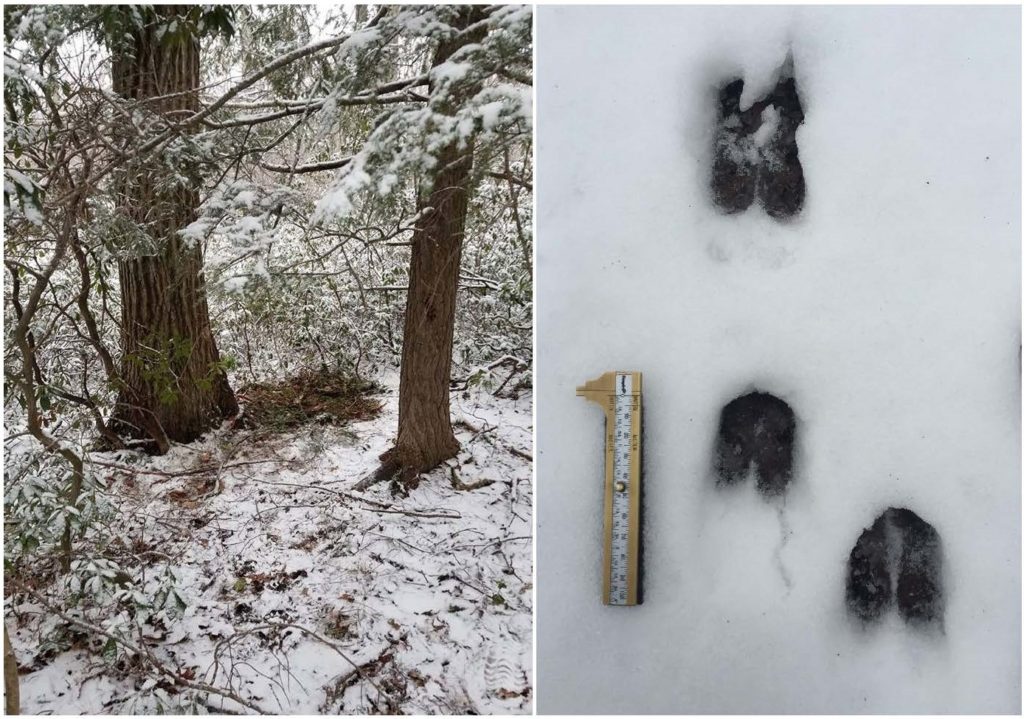
We had answers from Chuggy Charles (UK) and Marcel du Haime (USA) for ungulate, Chuggy went for red deer and Marcel for white-tail. We can rule out white-tail because that’s a North American species. Chuggy pointed out that the range maps show red deer across most of England, but these are smaller. I’m waiting on a report from John Rhyder, who literally just wrote the book on Tracks and Signs in England, to get back to me with measurements and morphological differences. I’ll get back to you once I hear from John. I’m sure there is overlap in size between small red deer and large fallow deer. These are fallow deer tracks.
In fact, it’s a fallow deer buck’s bed against a tree, and his tracks leading away. We spooked a group of these deer while giving a trailing evaluation in West Sussex, where there are no red deer. Below, see a pic of them from our trail.
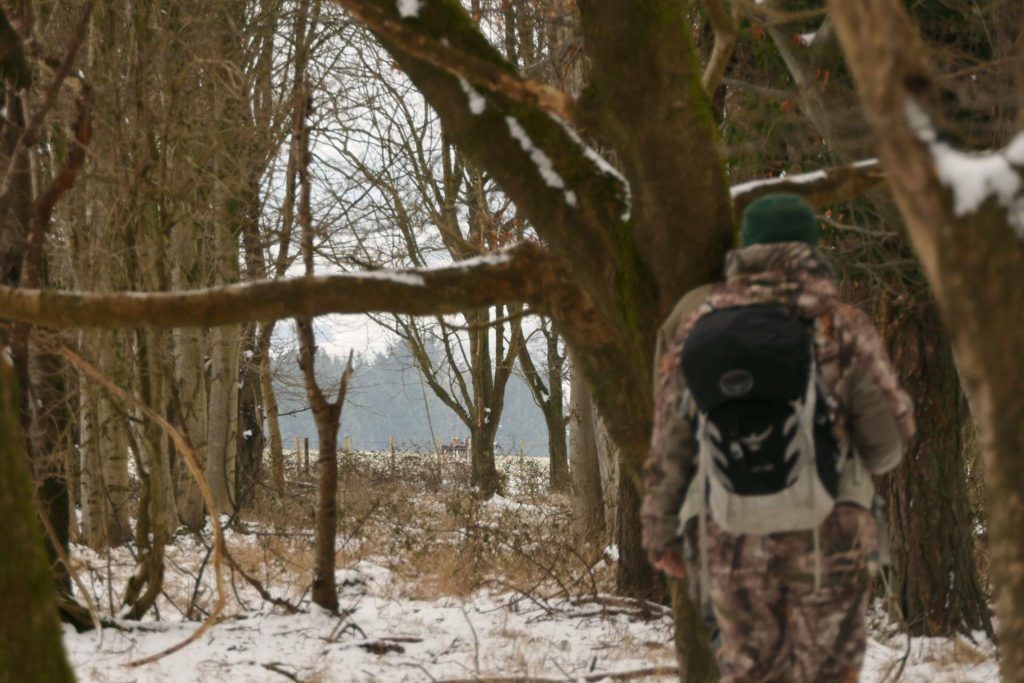
Monday 4 May 2020
Our question today comes from Torres del Paine National Park in the South American country of Chile. The question is what species’ scat is this? I had to climb up into this small tree to photograph it. The object for scale is a peso coin! (I swear I left a small fortune in the field, by accident, during the two winters that I worked there for my Master’s degree!)
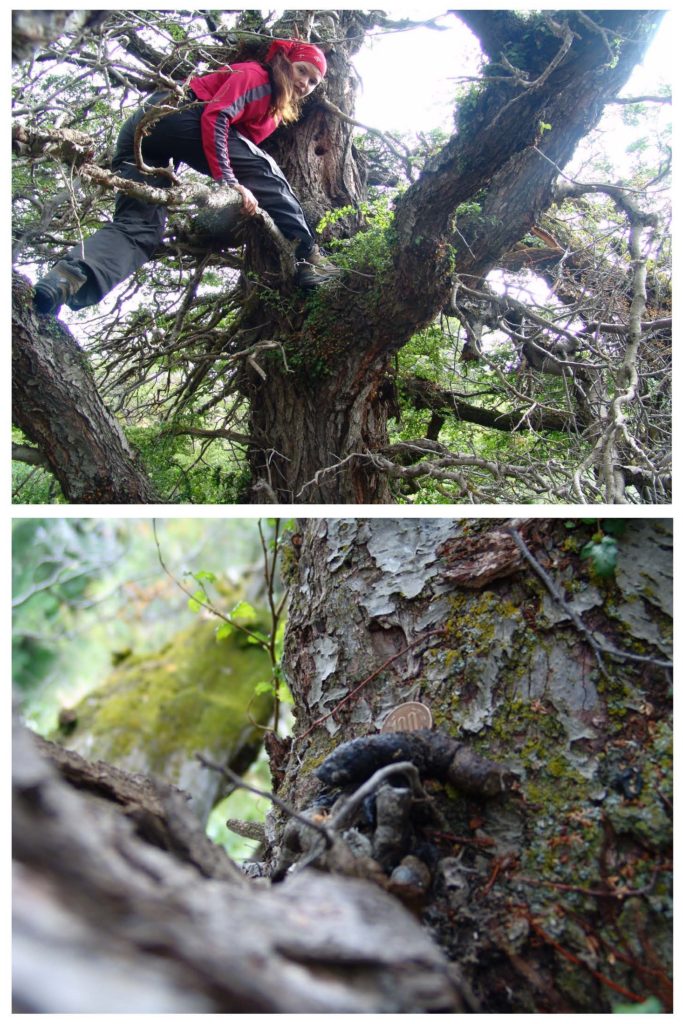
Paul Glasser had a great guess with “the South American gray fox. This is a guess, but my reasoning is that they eat what you found in the scat, they climb trees, and they’re common in the location you indicate.” He even included a photograph of one that wandered through their Italiano campsite in Torres del Paine. But, I have never know grey foxes to defecate up in trees, whereas the Geoffrey’s cat is well known for it in that area.
To be clear, I am not 100% certain that it is Geoffrey’s cat scat, but it looks like a cat scat to me, and not a more omnivorous fox scat. The local experts and the books all said, “Geoffrey’s cat.”
Patrick Bernard Oreja had what I consider to be the closest possibility, with “kodkod” or the Leopardus guigna, also known locally as the colocolo. It’s another small cat that spends a lot of time in trees, but is much rarer than the Geoffrey’s cat.
My favorite response, though, was from old friend, Alvaro Zúñiga-Reinoso, who was with me on this expedition. He said, “I remember the day, it was a small ñirre patche and you scream of happiness because you found this small piece of shit… I guess was a Geoffroys cat, but also could be a Colocolo cat. The first option is more probably.”
That made me laugh.
Thanks to everyone who participated. Let’s keep learning together! If you have photos (with an explanation that you’d like to contribute), please contact me at kersey@originalwisdom.com – your contributions will be credited to you.
Download our recommended reading list for trackers by signing up for our “News for Trackers” newsletter!
Our goal is NOT to be spammy with our newsletter. We’d just like to send occasional updates on upcoming programs and maybe some cool info on wildlife, people, and tracking!
Once the sign-up form has been submitted, you will be re-directed to the download page.
Download our recommended tracking book list (and some other resources). It’s specific to Southern Africa and North America, but, a good tracking book is helpful in any region as a starting point to learn how to look at track morphology and animal behavior.
[contact-form-7 id=”2892″ title=”Subscribe to the newsletter”]#trackingisoriginalwisdom, #natureguidetraining, #cybertracker, #trackercertification, #trackermentoring, #alwaystracking, #environmentaleducation, #ecologicalliteracy, #ecologicalintelligence #wildlifetracking, #animaltracking, #tracksandsigns, #systemsthinking, #ecology, #nature, #science, #conservation, #sustainability, #resilience, #adaptation #thinkinglikeamountain #weareallconnected #BeMoreNeedLess
